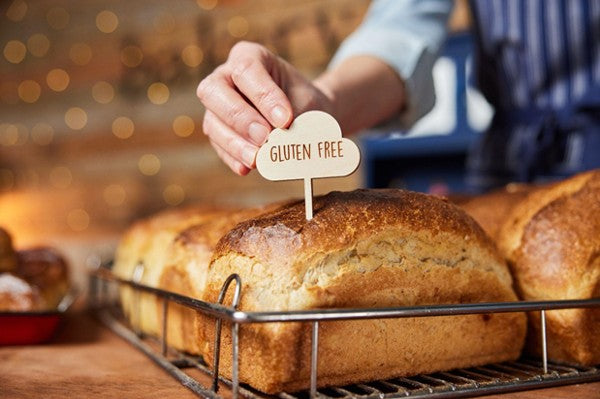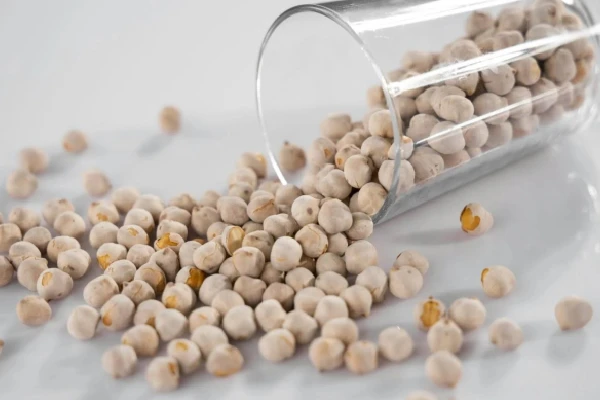5 Hidden Sources of Gluten in Foods
Friday Nov 18, 2022

Do you have celiac disease or a sensitivity to gluten?
If you answered yes then, unfortunately, you're probably all too familiar with what happens when you consume even the slightest hint of gluten. It sends your body into a tailspin and comes with excruciatingly uncomfortable symptoms such as bloating, gas, abdominal pain, nausea, constipation, brain fog, and joint pain. That makes being able to tell what has gluten versus what doesn't extremely important.
You know all about obvious foods that contain gluten like bread, cereal, and pasta. But there are actually many hidden sources of gluten you might not even be aware of.
What are these foods and how can you get better at identifying these sneaky sources of gluten so that you can remain gluten-free?
Keep reading to find out!
What Foods Have Gluten?
For a comprehensive gluten food list, look no further than the one below:
- Pasta
- Noodles
- Bread
- Breakfast foods (pancakes, waffles, french toast, biscuits)
- Breakfast cereal, granola bars
- Pastries (donuts, muffins, bagels, and croissants)
- Baked goods (cookies, cakes, and brownies)
- Tortillas
- Pretzels, crackers, and goldfish
- Croutons
- Beer, malt beverages
- If something contains wheat flour, that's a code word for gluten!
Hidden Sources of Gluten List
These days, if your goal is being gluten-free, you have to worry about much more than the typical foods that contain gluten like pasta, bread, and noodles.
There are many ingredients and foods with gluten you probably wouldn't suspect at all!
Take a look at these hidden sources of gluten you should definitely be aware of:
1. Chips and fries
Since chips and fries come from potatoes and corn, you might not think of them as containing gluten. However, the hidden gluten ingredients in chips and fries come down to how they're seasoned, as a lot get seasoned with either wheat starch or malt vinegar (which contain gluten).
Also, keep in mind there's the potential for cross-contamination depending on how your chips and fries are cooked. If they're cooked in a skillet or air fryer, for example, it presents the opportunity for them to come into contact with foods that contain gluten.
2. Processed meats, fish, and poultry
You can find gluten in processed meats like hot dogs, salami, sausages, meatballs, and even turkey breast or chicken depending on the way it's seasoned.
Breadcrumbs may contain gluten and get added to things like chicken breast, hamburgers, etc. Another thing to look out for is “imitation seafood.” This is made up of ground seafood meat (aka Surimi) and contains gluten that may be used in foods like crab or sushi.
To avoid hidden sources of gluten in your meats, only go with meat products that give you a 100% guarantee. For example, if your ground beef doesn't say “100% ground beef” then there is a chance it may contain gluten and it's probably best to avoid it.
3. Candy
Of all the items on our hidden sources of gluten list, this one may hit the hardest for most of us! If a candy contains gluten, it's most likely used to bind all its ingredients together
Regrettably, here are some popular candies that may contain gluten:
- Kit Kat
- Milky Way
- Twizzlers
- Pretzel & Crispy M&M's
- Mars Bars
- Whoppers
- Nerds
4. Condiments and sauces
Going without the hamburger bun is enough, right?
You may want to rethink that strategy because condiments claim a spot on the list of hidden sources of gluten.
Gluten is used in condiments to make them thicker. The vinegar in some condiments also might contain gluten. To be sure, always check the label. If a specific condiment contains “malt vinegar” instead of just regular vinegar, this means it contains gluten.
Some of the most common perpetrator condiments for hidden sources of gluten include:
- Soy Sauce
- Worcestershire Sauce
- Ketchup
- Mustard
- Barbecue sauce
- Mayonnaise
5. Soups
Similar to condiments, some soups use gluten as a thickening agent. This may make them more savory but also something to stay away from if you're trying to be gluten-free!
How Do You Read a Food Label to Avoid Gluten?
At this point, you've come to know some of the unexpected ingredients and foods with hidden gluten. But when it comes to reading the label, how can you be sure?
The following tips should help you be able to identify whether or not a food or ingredient contains gluten:
- For a lot of foods, whether or not it contains gluten will be fairly apparent based on the ingredient list. By law, foods are required to have an FDA disclosure that lets you know if something contains wheat.
- The thing with that is there are other types of gluten besides just wheat. So when looking at a food label, you'll want to look for those sneaky ingredients that are code words for hidden gluten. This includes ingredients like starch, modified food starch, hydrolysate, hydrolyzed vegetable protein, hydrolyzed plant protein, hydrolyzed soy protein, textured vegetable protein, dextrin, yeast extract, fermented grain extract, maltodextrin, glucose syrup, brown rice syrup, caramel, malt flavoring, malt extract, malt vinegar (distilled vinegar is OK), brown rice syrup.
- Gluten can sometimes also get hidden in generic ingredients like “spices” or “natural flavors.” If you're unsure of whether or not something contains gluten, your best bet is to just go without it.
Wrapping Things Up
Being gluten-free is about a lot more than avoiding bread, pasta, noodles, and cereal. You now know about some of the most common hidden sources of gluten, such as processed meats, candy, and condiments, so you can be more careful with remaining gluten-free.
How can probiotics help?
The research we have so far is definitely promising! One review of studies published in The American Journal of Gastroenterology found probiotics to be beneficial for GI symptoms related to celiac disease. In another review published in Frontiers in Immunology, probiotics were talked about as an effective method for helping to reduce food allergy symptoms, especially in children.
So if you're looking for a gut health boost, check out Floré Personalized Probiotics! We analyze the trillions of different microbes in your gut to come up with a custom probiotic solution designed to help with abdominal pain, bloating, constipation, and a whole lot more!

About the Author
Chad Richardson is a freelance writer from Cincinnati, OH who also enjoys going to the gym and doing his best Arnold Schwarzenegger impersonation, scrolling through Netflix trying to find a new binge-worthy show, and catching a game to root on his hometown sports teams.


